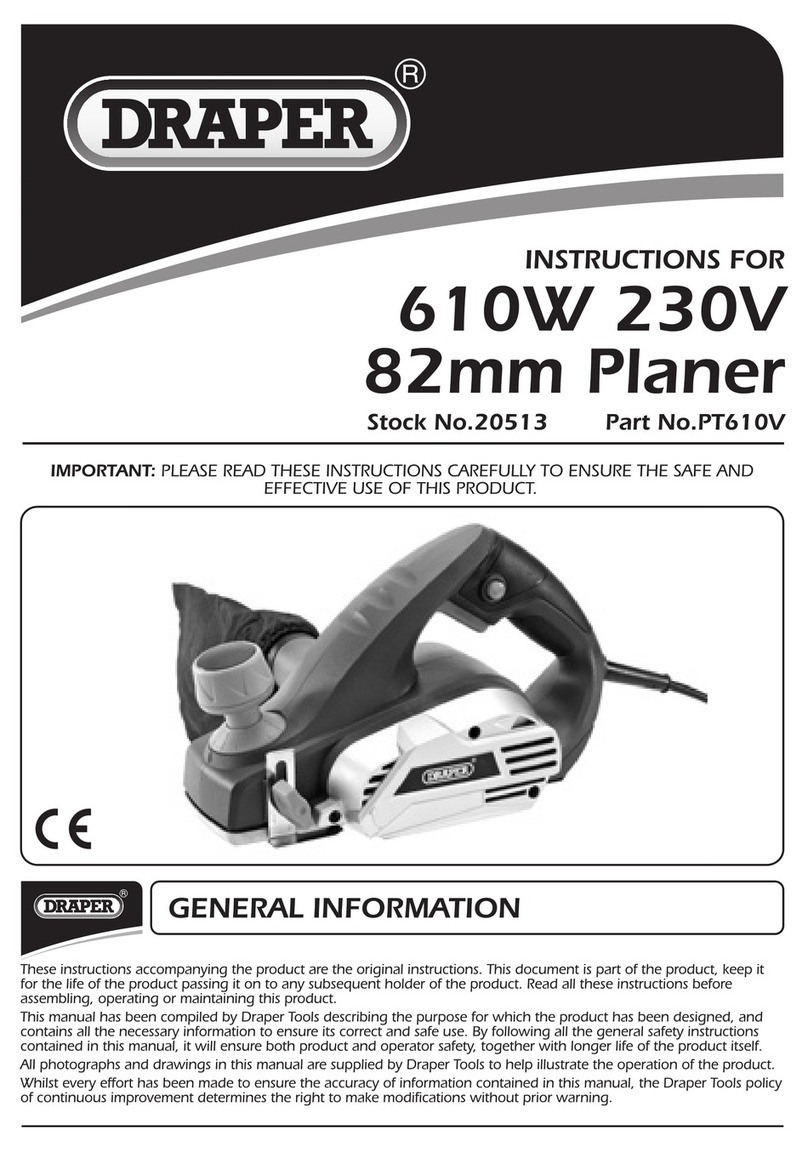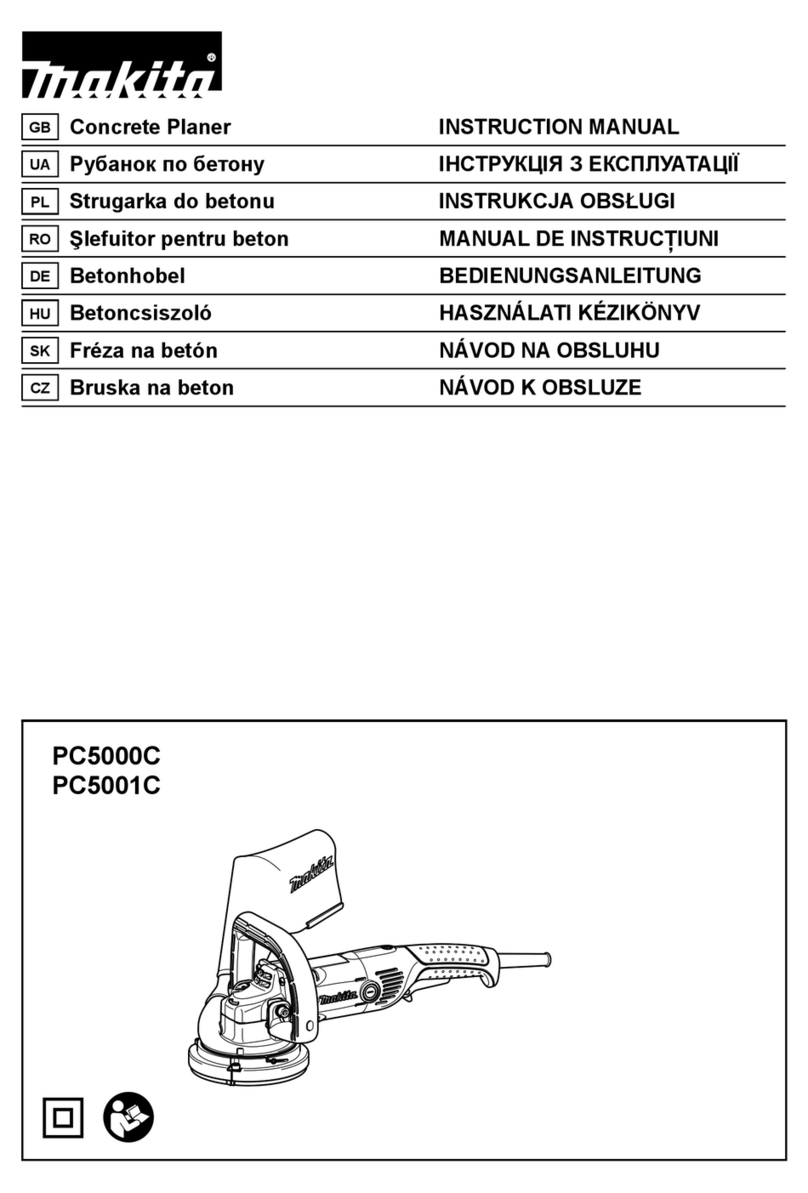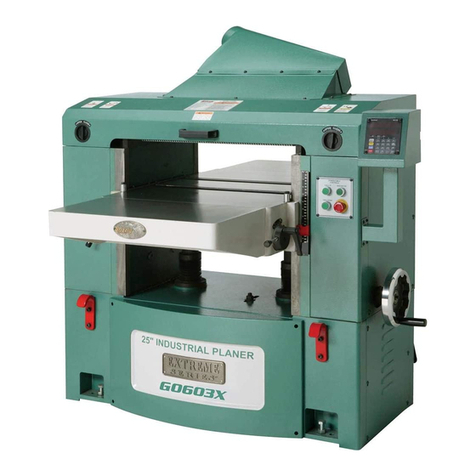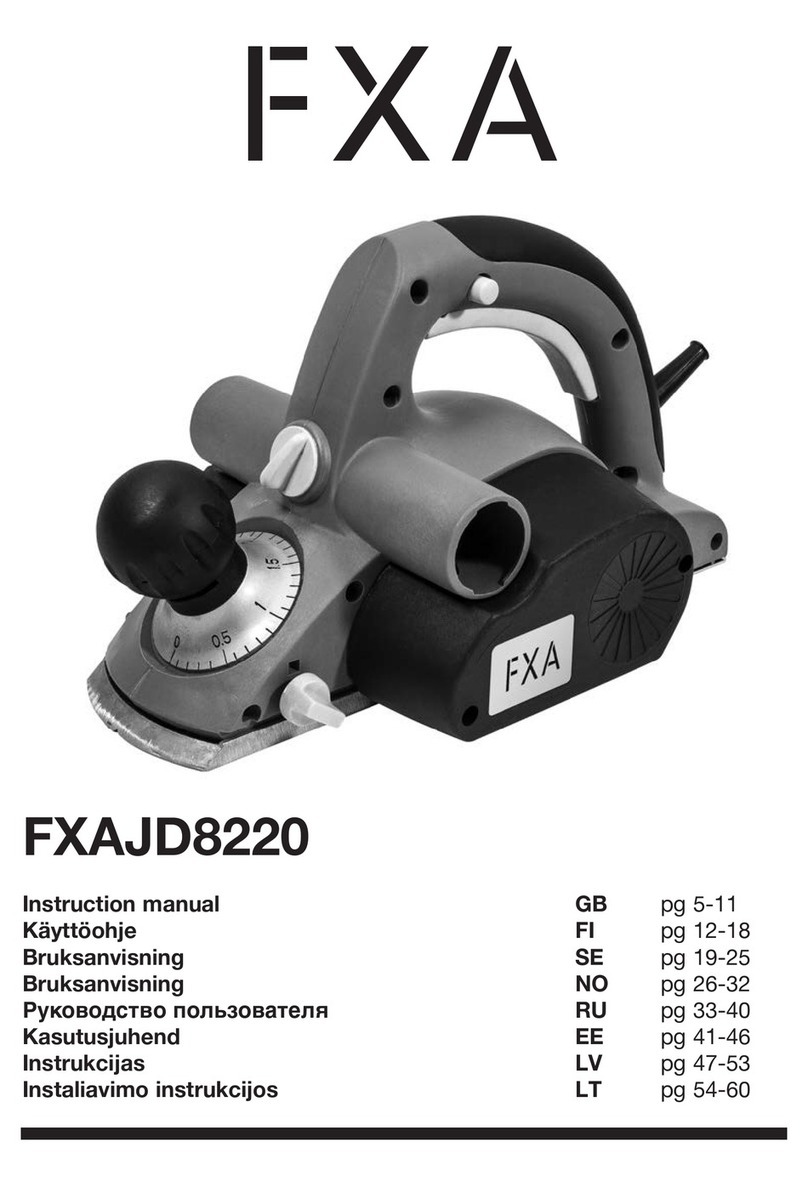10. Connect dust extraction equipment. If devices are provided for the connection of dust
extraction and collection equipment, ensure these are connected and properly used.
11. Do not abuse the cable. Never pull the power cable to disconnect it from the socket. Keep
the cable from the socket. Keep the cable away from heat, oil and sharp edge.
12. Secure work. If possible use clamps or a vice to hold the work. It is safer than using your
hand.
13. Do not over reach. Keep proper footing and balance at all times.
14. Maintain tools with care. Keep cutting tools sharp and clean for better and safer
performance. Follow instructions for lubricating and changing accessories. Inspect power cables
periodically and if damaged have them replaced by an authorized service facility. Inspect
extension cables periodically and replace if damaged. Keep handles dry, clean and free from oil
and grease.
15. Disconnect tools. When not in use, before servicing and when changing accessories such
as blades, bits, cutters, disconnect tools from the power supply.
16. Remove adjusting keys and wrenches. Form the habit of checking to see that keys and
adjusting wrenches are removed from the tool before turning it on.
17. Avoid unintentional starting. Ensure switch is in “OFF” position when plugging in.
18. Use outdoor extension leads intended for outdoor use and so marked.
19. Stay alert. Watch what you are doing, use common sense and do not operate the tool when
you are tired.
20. Check damaged parts. Before further use of the tools, it should be carefully checked to
determine that it operates properly and perform its intended functions. Check the alignment of
moving parts, binding of moving parts, breakage of parts, mounting and any other conditions
that may affect its operation. A guard or other part that is damaged should be properly repaired
or replaced by an authorized service center unless otherwise indicated in this instruction manual.
Do not use the tool if the switch does not turn on and off.
21. Warning! The use of any accessory or attachment other than one recommended in this
instruction manual may present a risk of personal injury.
Have your tool repaired by a qualified person. This electric tool complies with the relevant safety
rules. Repairs should only be carried out by qualified technicians by using original spare parts,
otherwise this may result in considerable danger to the user.
22. Have your tool repaired by a qualified person. This electric tool complies with the relevant
safety rules. Repairs should only be carried out by qualified technicians using original spare
parts, otherwise it may result in danger to the operator.
23. Never use the machine if the appropriate guard is not in place and correctly adjusted.
24. Do not use knives that are blunt as this increases the danger of kickback of workpieces.
25. Any portion of the cutterblock not being used for planing shall be guarded.
26. When planing narrow short workpieces, a push stick should be used.
27. When planing narrow workpieces, additional measures, such as the use of horizontal
pressure devices and spring-loaded guards, may be necessary to ensure safe working.
28. Do not use the machine to cut rebate.
29. Before starting the machine carefully read the instruction manual to avoid any risks of
personal injury.
30. The effectiveness of the device for the prevention of kickback and the feed roller should be
regularly inspected to ensure safe operation.
31. Tool equipped with chip collection and extraction hoods shall be connected to the
dust-and-collecting device.



























